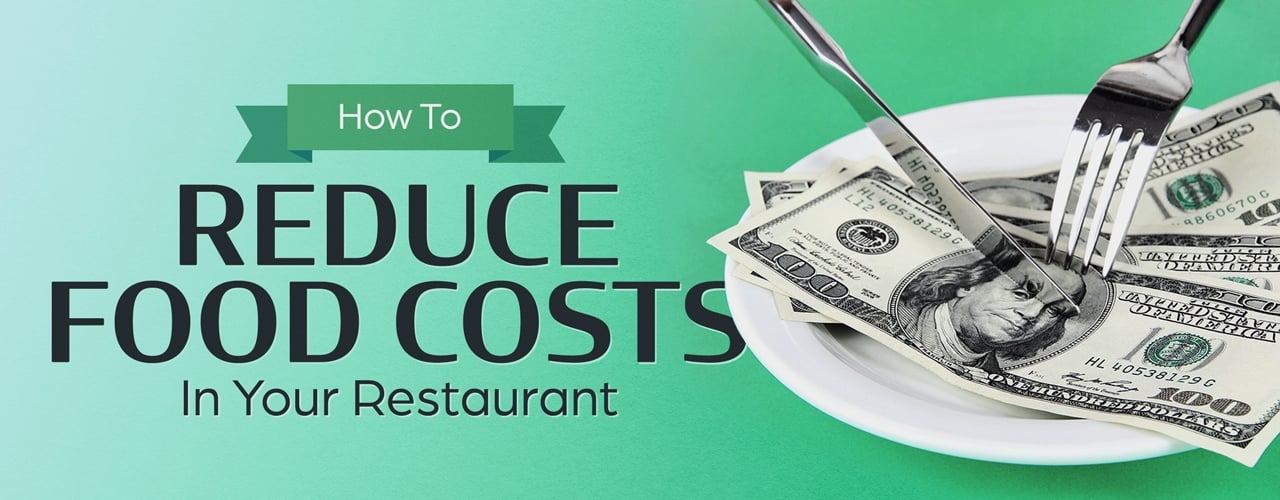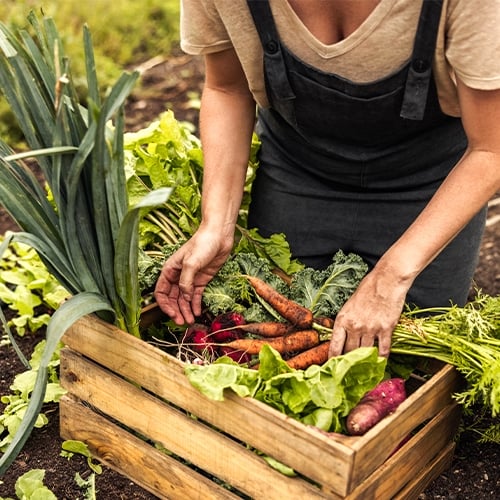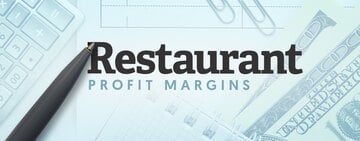
According to the USDA, 30 to 40% of all food produced in the U.S. is wasted, which ends up costing approximately $161 billion every year. One of the biggest contributors to the food waste problem is the restaurant industry, and all of that waste can hurt your bottom line. By setting goals for your restaurant and making some small changes such as taking inventory, changing your food orders, and using your food creatively, you can have a major impact on your profit margin.
How to Control Food Cost
Reducing food costs and waste starts with tracking and monitoring the food coming into your restaurant. Many restaurants order food in bulk shipments, but it can be difficult to use all of that food before it spoils. To reduce spoilage, here are some steps you can take:
1. Calculate Your Food Costs
Calculating food costs in a restaurant can be a time-consuming task, but staying on budget with your finances could help you save time, money, and food in the long run. Some things to take into consideration when calculating a food cost percentage are your inventory, the cost of goods sold (COGS), and food cost percentage. These factors can help you stay on budget and track your profit and loss statement.
How to Calculate Food Cost Percentage
The best way to calculate your actual food cost is to take your COGS divided by your food sales, multiplied by 100. This will you give you a result as a percentage.
- Food Cost Formula: (Cost of Goods Sold / Food Sales) x 100 = Food Cost Percentage
A healthy food cost percentage is between 25 and 35 percent, but do not fret if your percentage is higher than this. If you are spending more on food, you may not be spending as much on labor or rent – which all evens out in the end.
2. Be Consistent When Calculating Inventory
When calculating your inventory, you should be tracking this at a consistent time of the day. For example, it is best to calculate your inventory at the beginning or end of each day. This helps you keep your numbers consistent when calculating inventory and your food cost percentage. You can streamline the process by using an inventory tracking platform that allows you to manage invoices, food cost, and menu prices from your phone or tablet.
When a food order arrives, you should always inspect the delivery’s contents to ensure that you are not accepting food (and therefore, paying for it) that is past its prime or damaged and unusable.
Checking inventory regularly can give you an idea of how and at what rate your food is being used or wasted. For example, if you notice that you have salami that is going unused and spoiling, change your food order to a lesser amount to reduce food waste. Conversely, if you’re running out of mozzarella cheese before your dinner service even starts, you need to increase your food order.
3. Work with Your Food Suppliers

Once you have an idea of how much food your restaurant uses at a given time, you can work with your suppliers to lower your food costs. If possible, shop around and see what competing suppliers are willing to offer you. If you have a good relationship with your current supplier, ask them for a discount or to match prices with their competitors.
Another option would be to work out a plan where you buy in bulk but have the order sent in several shipments, rather than all at once. Ordering food in bulk can be cost-effective, but it can lead to food spoiling, which negates any money you would have saved by buying in bulk. Having your shipments sent in several installments ensures that you’re always serving fresh food, reduces the amount of food wasted, and saves you money.
4. Join a Group Purchasing Organization
If you’re unable to work out a deal with your supplier to buy in bulk, consider joining a group purchasing organization. Group purchasing organizations pool the resources of many small restaurants together to get the best quality goods while keeping costs low. The combined capital of many individual restaurants is significant, which gives the organization considerable leverage when bargaining with suppliers, ensuring that you’re getting a good deal.
When purchasing food, there is also the option to cut out the middleman and go straight to the source: local farms and farmers markets. Many times, food that is shipped from across the country is picked before it’s fully ripe and flash-frozen, which can hurt the taste. Buying food locally ensures that you’re getting the freshest products possible while also supporting your local economy.
5. Manage Your Food Orders

When it comes to food orders, the harder you’re willing to work, the more you can save. Below are some ideas on how to save money, while also making quality food.
- Offer a limited menu. By limiting your menu, you can cut the number of ingredients you need in your kitchen. Not only can this help reduce food costs and food waste, but it's ideal when adapting your menu for takeout service.
- Take extra time to do the prep work yourself. For example, buying a chicken that is already deboned, skinned, and portioned is going to be more expensive than just buying whole chickens.
- Keep track of food prices and how they can affect your shopping list. For example, a drought in California would affect the avocado harvest, so it probably wouldn’t be the best time to introduce guacamole to your menu.
- Utilize seasonal food to save money on produce. Seasonal food depends on your location, so check out your local farmers market to see what’s fresh and to find inspiration for new recipes.
- Be aware of food specifications with your produce. In the U.S., food is inspected and sorted into grades (especially beef!) depending on its quality, freshness, and appearance. Many times the differences between top grades are purely cosmetic. For example, there is very little difference between No. 1 and No. 2 avocados, so by ordering the No. 2 option, you can lower your food costs without sacrificing taste.
6. Implement Restaurant Portion Control
Controlling food portions is an excellent way to reduce waste. Monitor how much food is being thrown away. If your customers can’t finish a dish consistently, the portion is too big. Use restaurant portion control tools like portion scales and portion spoons to serve the proper amount of food to your customers. There are also many benefits to serving smaller portions besides just decreasing food costs, such as being able to create more fine-tuned meals and diversifying your offerings.
7. Use the First In, First Out (FIFO) Method
The first in, first out method is pretty straightforward: use the first ingredients that you put into your pantries and refrigerators first. This forces you to use the oldest food first and ensures you’re always stocked with fresh ingredients. It also helps prevent food from expiring without being used.
8. Utilize Your Daily Specials

Daily specials can be an effective tool for reducing waste in your kitchen. When you notice food that has been in your pantry for a while, come up with a recipe that features or uses that ingredient, and add it to your daily special list. You can also train front-of-house staff to encourage customers to try the daily special, allowing you to clear out your stock while also making a profit.
9. Keep Your Staff Informed
It is important that your staff knows the price of your food and how their actions can affect your bottom line. During the food prep process, there can be a lot of unnecessary waste. The cost of that waste, while it may seem insignificant at the time, can compound to become a major loss. So if your staff is knowledgeable about how much the food costs and how to utilize it properly, they will be more careful when preparing food and portioning dishes.
10. Create a Profitable Menu
Your menu is the best marketing tool you have, and good menu engineering can convince your customers to buy more food, equaling less waste. Menu engineering is strategically designing your menu with psychological techniques to construct it in the most effective way. A menu redesign might be just what you need to convince your customers to order from each section on your menu.
Tips on How to Reduce Food Waste

In the cooking process, some by-products and food waste are inevitable, but some chefs are finding creative and innovative ways to incorporate those by-products into their dishes. Here are a few ideas for using leftovers wisely and reducing food waste.
- Save vegetable scraps like onion skins, carrot peels, and mushroom stalks for making homemade vegetable stock.
- Don't throw away that stale bread. You can use it to make a lot of different things like croutons, breadcrumbs, and bread pudding.
- Shred up roasted chicken and turkey the following day and use the meat in a soup or stew.
- Craft breweries and brewpubs can use extra grain from brewing beer to make homemade granola. You can also donate it to local farms as feed for livestock.
- Use leftovers and older ingredients for making staff meals. The food is still safe to eat, but it might be slightly beyond the standard for what you would serve to customers. This way, you can treat your staff while saving money.
- If you can't find a use for your leftovers, take them to your local shelter or food bank. Charitable food donations are tax-deductible, allowing you to get rid of excess inventory, save on your taxes, and help your local community, all in one.
Food waste can have a huge impact on the bottom line of your restaurant. But through negotiating with suppliers, buying locally, serving reasonable portion sizes with restaurant portion control tools, and using your ingredients creatively, you can reduce food costs in your restaurant.





